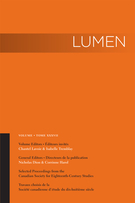On 21 July 1780, Patriot General “Mad” Anthony Wayne, with George Washington’s sanction, led an attack against the Loyalist Refugee Blockhouse commanding Bull’s Ferry on the Hudson River, near Bergen Neck, New Jersey, to seize that fortification as well as cattle and any other adventitious supplies. Wayne’s two thousand dragoons and Pennsylvanian continentals failed to wrest the Blockhouse from the deserter Thomas Ward’s seventy defenders—twenty black men among them—despite the four six-pound field-pieces they ranged against the stockade at sixty yards, bombarding the Blockhouse with fifty cannonballs between eleven in the morning and a quarter past noon. The Patriot William Irvine, however, managed to drive away a herd of cows and plunder additional animals from adjoining farms. Tory forces, locally called “the woodcutters,” since they supplied New York City with fuel and lumber, kept up a galling fire from the cover of trees. Sixty-four of Wayne’s troops fell, killed or wounded. In New York, the British intelligence officer Major John Andre—long-time friend of the poet Anna Seward (1742–1809)—commemorated Wayne’s exploit in “The Cow Chace,” a satirical ballad. Andre (1750–80) had almost met his poem’s protagonist at the Battle of Brandywine in 1777. “The Cow Chace” appeared in three parts in James Rivington’s Long Island Royal Gazette. Andre’s ballad conforms to kind. Iambic tetrametres alternate with iambic trimetres. The Patriots—randy, cowardly, bibulous hicks—attacking, the Loyalists (distressed and decent men of feeling) give their opponents “a lickin.’” Appetite for sex with a stray “nymph” overrides the miles gloriosus Wayne’s commitment to his men and mission. In the final—seventeenth—stanza of the first part, Andre invokes a muse ironically, by the figure of preterition refusing to let her speak of drunken Rebels’ abundant urination. It is worth posing the question, “Who—or what—is the muse of ballad?” A muse presides over form, but true ballads are folkish. The Revolutionary War stimulated both sides to easily circulated, easily remembered, facetious or affecting ballads. Sentiment and ridicule equally stir partisan emotion. The Patriot spy Nathan Hale, executed by the British in 1776, inspired an instance featuring sincere use of the pathetic fallacy: But Andre’s obvious point of departure is “Chevy Chase,” collected in Thomas Percy’s Reliques of Ancient English Poetry of 1765 and widely known in colonial America. Cheviot Chase names a hunting-ground on the marches of Scotland and England. Quoting Philip Sidney’s praise of the ballad from his 1595 “Apology for Poetry,” Percy alleges “The Ancient Ballad of Chevy Chase” invites the completest readership possible, unifying “the most simple readers” with the “most refined.” He assigns the verse to the reign of Henry VI; it may refract the Scottish victory at Otterburn, Northumbria (1388). Nobler in tenor than Wayne’s cattle-thievery, a deer-hunt in defiance of the Scottish “lord of the soil” Earl Douglas escalates into battle. In 1711, Joseph Addison equals “Chevy Chase” to Virgil’s Aeneid. Although The Princeton Encyclopedia of Poetry and Poetics notes “[t]he commonest ballad theme is tragic love of a sensational and violent turn,” no such topic features in “Chevy Chase.” Andre’s “The Cow Chace,” however, introduces this motif in a bawdy but telling way. As in “Chevy Chase,” the action of “The Cow Chace” transpires on disputed borders—the so-called “Neutral Ground” between Rebels and Tories; the frontier between human and non-human as well as superhuman; the zone separating and unifying male and female; even the occluded front between settlers of any political allegiance and indigenous peoples. Andre adds obscenity and uncanny prophecy, as though the ballad, obliged generically to clairvoyance, resisted entire travesty. Philip Gould identifies the peculiarity of “The Cow Chace,” without providing a rationale for it, beyond …
“The Cow Chace” and “A Monody”: Major John Andre’s and Anna Seward’s Prophetic Poems[Record]
…more information
Eric Miller
University of Victoria

